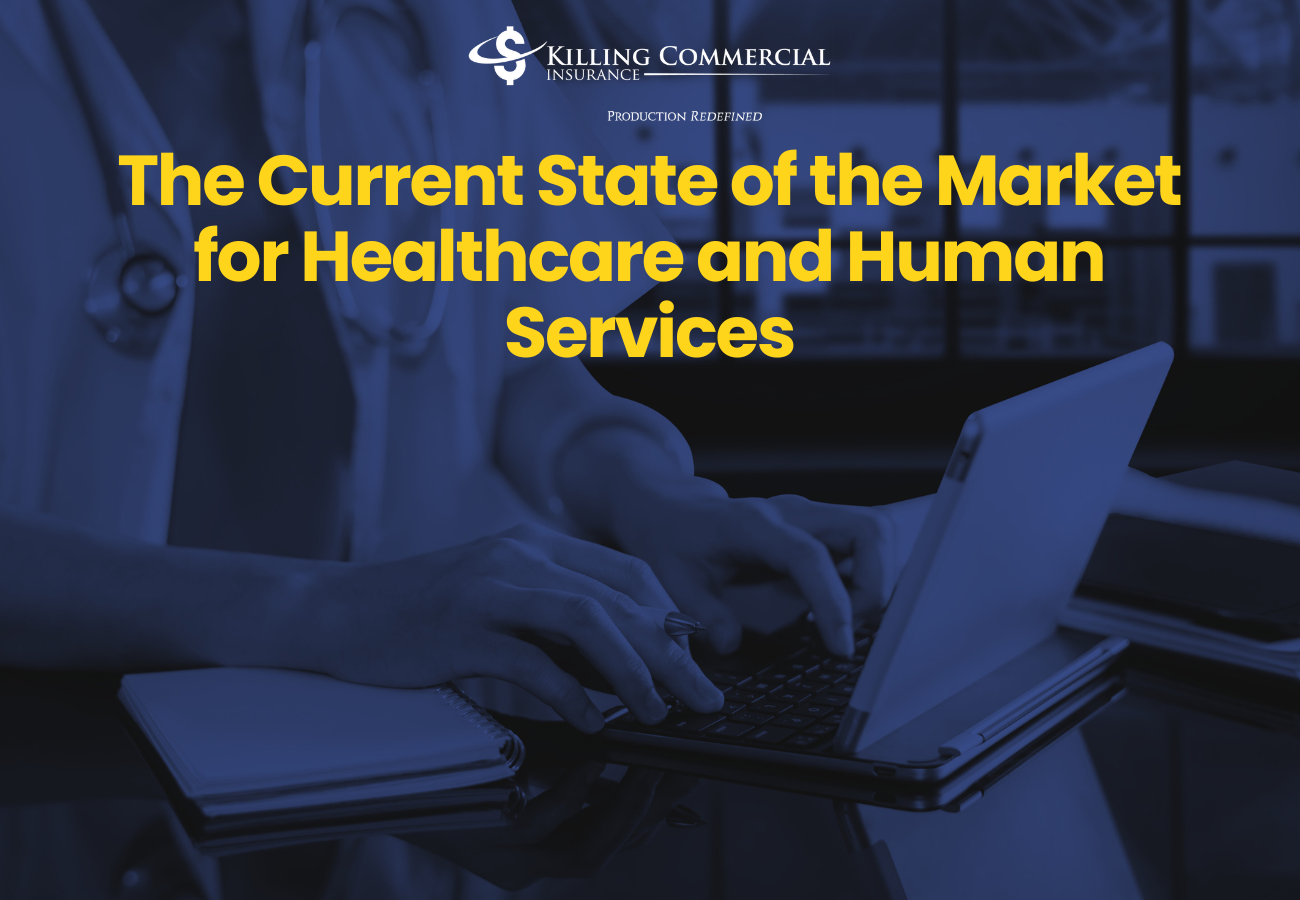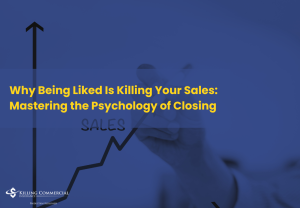Mastering Complex Risks in a Hard Market

As the market hardens across many lines, producers are learning that generalist approaches no longer cut it. Wholesale partners who specialize, who truly live and breathe their niche, are not just valuable—they’re essential.
That’s where professionals like Dylan Jordan and his team at Amwins come in. With a laser focus on medical malpractice, human services, and life sciences, they’ve become go-to problem solvers for agents navigating the most difficult-to-place risks. If you’re a retail agent walking away from complex accounts—or worse, mishandling them—it might be time to rethink your strategy.
This blog dives deep into the key market pressures, emerging niches, and wholesale strategies discussed in a recent Power Producers Podcast episode with Dylan Jordan. Whether you’re struggling with home healthcare insurance, trying to tap into the booming MediSpa insurance market, or grappling with long-tail exposures in social services, this guide will help you position your agency—and your clients—for long-term success.
Why Specialization is the Future of Commercial Insurance
One of the clearest messages from the conversation with Dylan Jordan was this: specialization wins.
His team doesn’t dabble in different lines. They do one thing extremely well: GL/PL excess in medical malpractice, human services, and life sciences. If a cyber policy or D&O submission lands on their desk, they hand it off. Why? Because taking it would make them “just another wholesaler”—a forwarding machine with no real value.
This commitment to micro-niching has paid off in spades:
- 50% of submissions bind—a staggeringly high close rate in the wholesale world.
- 93% renewal retention—driven by deep expertise and superior service.
- The team has grown steadily, adding one or two new members each year just to keep up with demand.
If you’re a retail agent still trying to be everything to everyone, take note. The future of production lies in becoming the most informed and efficient guide within your chosen vertical.
The Current State of the Market for Healthcare and Human Services
The hard market isn’t going anywhere. And unlike the past—where a single event like 9/11 or the 2008 crisis sparked a temporary hardening—this market is being propped up by multiple simultaneous catalysts, especially in healthcare and human services:
- Tort Reform Rollbacks
States are peeling back protections that once helped curb frivolous lawsuits. Georgia recently passed modest reforms, but for most states, the litigation environment is getting worse, not better.
- Third-Party Litigation Financing
Foreign entities—including those based in China and Russia—are backing lawsuits in U.S. courts, looking for massive settlements. These financiers aren’t looking to settle—they want to prolong litigation and maximize payouts. In some cases, the plaintiff doesn’t even receive the verdict payout because the litigation financier structured the deal to keep 100% of the winnings.

- Abuse Claims & Statute Changes
In more than 30 states, statutes of limitation have been rolled back or eliminated for abuse-related claims. That means insurers are now being hit with claims from the 1980s and 1990s, often based on ACORD forms written decades ago. For underwriters and actuaries, this creates an impossible scenario: how do you price something you can’t predict, based on exposures that existed under now-defunct policy language?
This perfect storm is creating chaos in the human services space, where accounts that were once squarely in the admitted market are now struggling to find homes—even in ENS.
MediSpas and Home Healthcare: The Hidden Growth Goldmine
If you’re looking to write a high-volume niche that’s grossly underserved, look no further than home health care and MediSpas.
These two verticals are exploding in number—and in complexity. According to Dylan, they’re showing up on “every corner,” with startups entering the market weekly.
Key Exposures in MediSpa Insurance
Many MediSpas offer:
- Semaglutide injections (Ozempic)
- Microneedling
- PRP (platelet-rich plasma)
- Botox and dermal fillers
- Stem cell therapies
- Regenerative medicine
Here’s the issue: many carriers only cover the operations listed on the application. So if a client adds a new treatment but fails to disclose it, there’s no coverage in the event of a claim. It’s not uncommon to see applications with vague descriptions like “MediSpa services,” while the facility is actually administering controlled substances or performing high-risk procedures.
A real-world example? Dylan’s team encountered an IV therapy clinic that began injecting stem cells without informing the carrier. The policy was priced and underwritten for basic hydration treatments. That’s a denial of coverage waiting to happen.
Opportunity in Home Healthcare
Home healthcare businesses are multiplying thanks to aging populations and the shift toward in-home services. These companies carry work comp, GL, and professional liability exposures, often at a low rate with high claim potential.
In both cases, Dylan recommends leading with a policy audit. Many accounts have outdated or incomplete applications, making them ripe for wedge-driven conversations.
The Critical Role of Supplemental Applications and Tech Solutions
Supplemental applications are a necessary evil in the healthcare space. There is simply no way to properly rate or underwrite many of these risks using standard forms.
Agents who shy away from complex supplementals are leaving money on the table.
The good news? Tech tools are making it easier to gather and submit this information. Dylan highlights platforms like:
- Sembly
- Indio
- Broker Buddha
These tools automate data intake, improving accuracy and reducing the time commitment for both agents and insureds. If you’re not using them yet, you’re already behind.
Wholesale Intelligence: Vetting Carriers in the ENS Market

In today’s volatile market, not all carriers are created equal. Dylan’s team routinely uses S&P Capital IQ to analyze:
- Combined ratios
- Premium volume
- Interest income
- Loss trends
He warns agents not to get seduced by low premiums from non-AM Best rated carriers—especially RRGs. Some RRGs aren’t even covered under the producer’s own E&O policies.
In one case, Dylan uncovered a large enterprise with $500M in revenue being insured by a company that only writes $12M in total premium. That’s a massive imbalance in capacity—and a major red flag.
Strategic Producer Advice: Where the Opportunities Are
Wondering where you should be spending your prospecting time? Here’s where Dylan recommends you go:
MediSpas
- Easy to identify and research
- High rate of underinsurance
- Rapid revenue growth (from $1M to $10M in a few years)
- Multiple lines of coverage: GL, PL, med mal, work comp
Home Healthcare
- Massive growth due to aging population
- Underserved by specialists
- Auditable payroll = wedge opportunity
Human Services
- Accounts are shifting from admitted to ENS
- High premium potential
- Boards of directors = more complex decision-making, but also greater value opportunities
- Recent exits by large carriers = less competition
These classes also create downstream opportunities for D&O, property, umbrella, and even fleet coverage.
The Retail-Wholesale Relationship Done Right
Most retail agents work with too many wholesalers. The best approach? Build strong, specialized relationships.
Dylan and his team:
- Co-present to insureds when agents need technical backup
- Communicate proactively during renewals
- Never submit business outside their niche
- Offer realistic assessments, even if it means sending you directly to an admitted market
For example, if Philadelphia or Chubb is a better fit for an account, Dylan will tell you—because preserving his time and yours leads to better outcomes for everyone.
He also stresses the importance of early renewal engagement (120 days out) and being realistic with revenue projections. Over- or under-projecting can lead to inaccurate pricing, surprise audits, and angry clients.
Final Thoughts: Choose Your Risks Wisely—and Lean into the Right Partners
The path to production in a hard market doesn’t lie in quoting every line. It lies in smart specialization, leveraging expert partners, and learning to ask better questions.
If you’re not sure how to get started, consider these simple action steps:
- Audit your current book for MediSpas and home healthcare providers.
- Use supplemental apps to capture accurate exposures.
- Ask your wholesalers how they vet carrier solvency—and don’t accept vague answers.
- Focus your pipeline on niches where you can develop repeatable processes.
As Dylan put it best: “There’s always an option. We’ve never walked away from a risk in our wheelhouse.”
When you find the right partners—and commit to a niche—the game changes. You’ll close more business, retain more clients, and become the authority your market needs.

From Confusion to Clarity: How Insurance Agencies Can Unlock Growth Through Strategic Leadership and Culture
In the fast-paced world of commercial insurance, the grind of daily operations often blinds agency leaders to the foundational cracks forming beneath them. Producers are focused on closing deals. Account managers are buried in servicing. Agency principals are juggling leadership, sales, operations, and finance. Yet in the midst of this hustle, many agencies lack the one thing that can unlock the next level of growth: organizational clarity.

Building Legacy Through Discipline: How Brian Shaw Transformed Adversity into Agency Growth and Purpose
Brian’s journey isn’t one of shortcuts or overnight success. It’s the story of a man who has faced battlefields, boardrooms, and hospital beds — and come out the other side with an unshakable sense of purpose. His agency is young, his vision is clear, and his “why” runs deep.

Becoming the Specialist: How Niches, Networks, and Relentless Execution Create Elite Producers
Every producer wants to win. But only a small percentage ever reach the level where winning becomes inevitable—not because they get lucky, not because the market is soft, but because they commit themselves to mastery. They study harder, niche deeper, build better networks, and execute with more consistency than everyone else around them.

Becoming the AI-First Agency: How Insurance Producers Can Leverage Automation to Outpace the Competition
Artificial Intelligence is no longer a buzzword for tomorrow. It’s today’s most powerful tool for increasing efficiency, lowering costs, and growing your book of business faster than ever before. For insurance producers and agency owners, this isn’t a matter of curiosity or a “nice to have” anymore. It’s a necessity. The reality is that your competition may already be using AI-powered tools to identify prospects, streamline service, and close deals before you even realize you’re in the game.

Faith, Empathy, and Opportunity: How Lloyd Brown is Redefining Diversity and Purpose in the Commercial Insurance Industry
In every season of The Protege, one thing becomes crystal clear—success in the commercial insurance industry isn’t about where you start, it’s about who you become.
In this episode of the Power Producers Podcast, I sat down with Lloyd Brown, a middle market producer from Orlando, Florida, whose story is equal parts faith, resilience, and purpose.

Why Being Liked Is Killing Your Sales: Mastering the Psychology of Closing
Salespeople are often taught to be charismatic, friendly, and well-liked. But as David Carothers and high-ticket sales expert Austin Medlin explore in their recent conversation, that mindset could be the very thing sabotaging your close rate. Austin, the founder of CloseSales.com, brings a fresh perspective from outside the insurance industry that perfectly aligns with what commercial producers face daily: buyers who need leadership, not another friend.

Responses